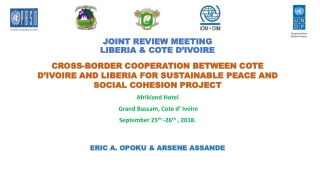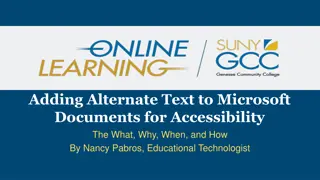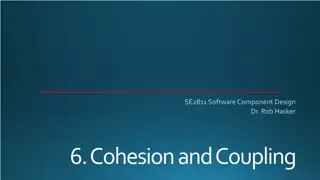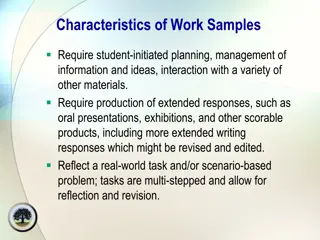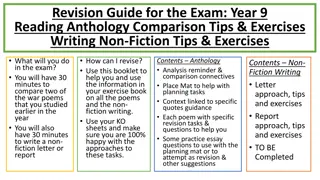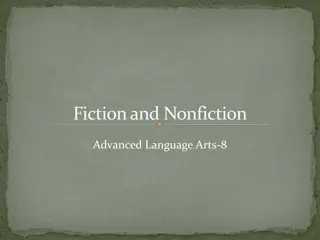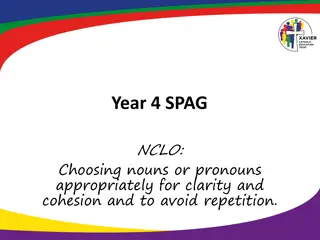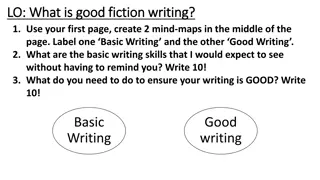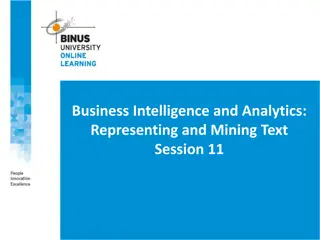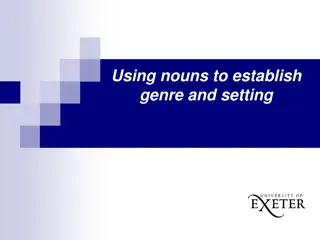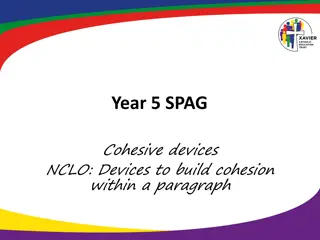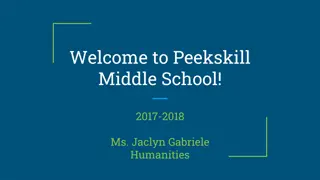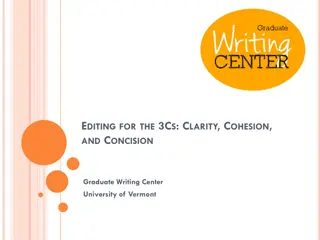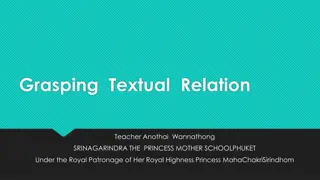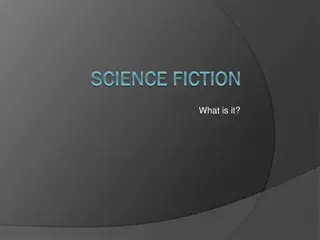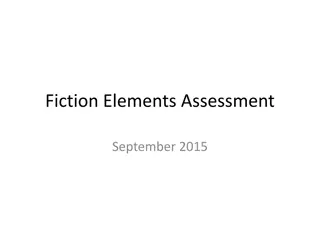Understanding Text Cohesion in Non-Fiction Writing
Exploring text cohesion in non-fiction writing by analyzing how ideas are linked and sequenced clearly using key linguistic elements like nouns, pronouns, determiners, and verbs. The importance of maintaining coherence for readers to easily follow the text is highlighted through examples and explanations from various texts.
Download Presentation

Please find below an Image/Link to download the presentation.
The content on the website is provided AS IS for your information and personal use only. It may not be sold, licensed, or shared on other websites without obtaining consent from the author. Download presentation by click this link. If you encounter any issues during the download, it is possible that the publisher has removed the file from their server.
E N D
Presentation Transcript
Y7 Language Detectives Investigating how language works: text cohesion
1. Give it all a good whizz until smooth. 2. Taste, and if you ve got a sweet tooth, add a sprinkling of brown sugar or honey and give it another quick whizz. 3. Place the fruit in a blender or food processor, along with any juice left on the chopping board. 4. Chill in the fridge before serving, then garnish with a few mint leaves. 5. Remove the skin from 2 large, ripe mangoes and cut the juicy flesh off them. 6. Add 150 ml of semi-skimmed milk, the zest and juice of 1 lime and 1 handful of ice cubes.
Jamies Mango Cooler Remove the skin from 2 large, ripe mangoes and cut the juicy flesh off them. Place the fruit in a blender or food processor, along with any juice left on the chopping board. Add 150 ml of semi- skimmed milk, the zest and juice of 1 lime and 1 handful of ice cubes. Give it all a good whizz until smooth. Taste, and if you ve got a sweet tooth, add a sprinkling of brown sugar or honey and give it another quick whizz. Chill in the fridge before serving, then garnish with a few mint leaves.
Terminology check Nouns are words for things, people, places, or states of mind or existence so they are the most common word class or type e.g.mangoes, fruit, juice Pronouns are words like they, we, it, these, those, which stand in for the nouns they refer to. Determiners like your, our, their are used with nouns to specify who or what is being referred to Verbs are the words in a sentence that refer to actions or states of being e.g. remove, add, chill The recipe uses imperative verbs which instruct you what to do
How can we link and sequence ideas in non-fiction writing so the reader can follow them clearly? Imagine a world where children were fed tasty and nutritious real food at school from the age of 4 to 18. A world where every child was educated about how amazing food is, where it comes from, how it affects the body and how it can save their lives. Jamie Oliver Our Food Revolution Toolkits are designed to inspire you to start a food revolution in your school and help ensure kids get real food on their lunch trays. These toolkits arm you with facts, empower you with ideas, and support you in making real change on the ground. They are meant to be used, printed, shared and passed on! Together we have an opportunity to support schools in making sustainable change. How are ideas linked and sequenced clearly across this text? by repeating and linking key nouns by using pronouns that refer back and determiners that specify who or what is being referred to by using key verbs in a logical order
Feedback: How can we link and sequence ideas in non- fiction writing so the reader can follow them clearly? Imagine a world where children were fed tasty and nutritious real food at school from the age of 4 to 18. A world where every child was educated about how amazing food is, where it comes from, how it affects the body and how it can save their lives. Jamie Oliver Our Food Revolution Toolkits are designed to inspire you to start a food revolution in your school and help ensure kids get real food on their lunch trays. These toolkits arm you with facts, empower you with ideas, and support you in making real change on the ground. They are meant to be used, printed, shared and passed on! Together we have an opportunity to support schools in making sustainable change. How are ideas linked and sequenced clearly across this text? by repeating and linking key nouns by using pronouns that refer back and determiners that specify who or what is being referred to by using key verbs in a logical order
How can we link and sequence ideas in non-fiction writing so the reader can follow them clearly? The ideas in this text are muddled and confused. Can you improve it? Too many people are overweight. They should serve healthy food at school. It isn t good for us. Fresh fruit and salads would be better than that. They serve chips and stuff in the canteen. Our menus need to change. Concentrate on linking and sequencing ideas clearly across the text by repeating and linking key nouns by using pronouns and determiners that refer back and specify who or what is being referred to by using key verbs in a logical order
Feedback: How can we link and sequence ideas in non- fiction writing so the reader can follow them clearly? Too many schoolchildren are overweight. At our school, the food that is served in the canteen is not healthy enough and the menus need to change. We should be served nutritious fresh fruit and salads instead of chips and burgers.


